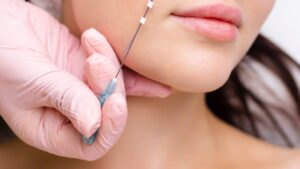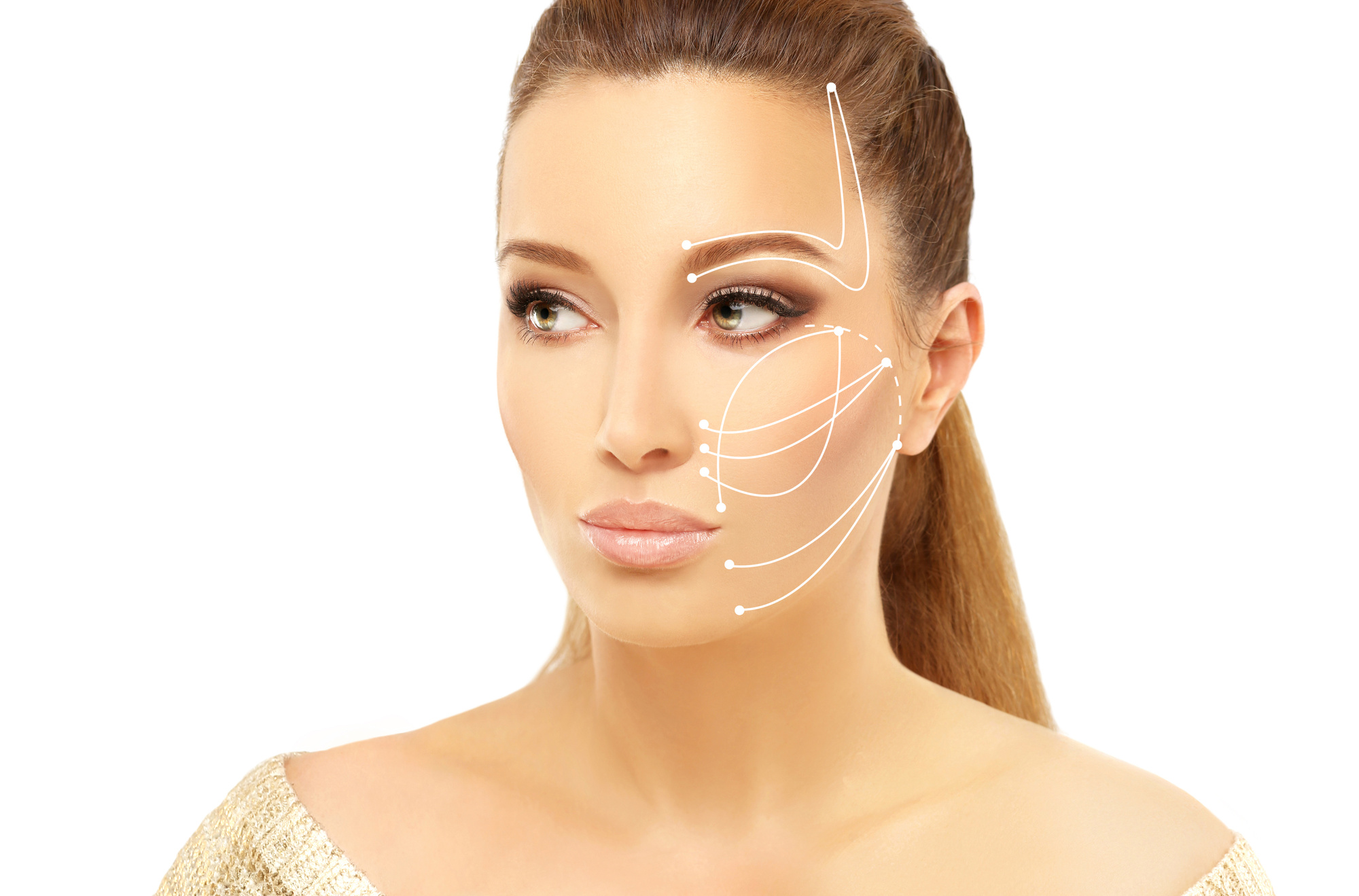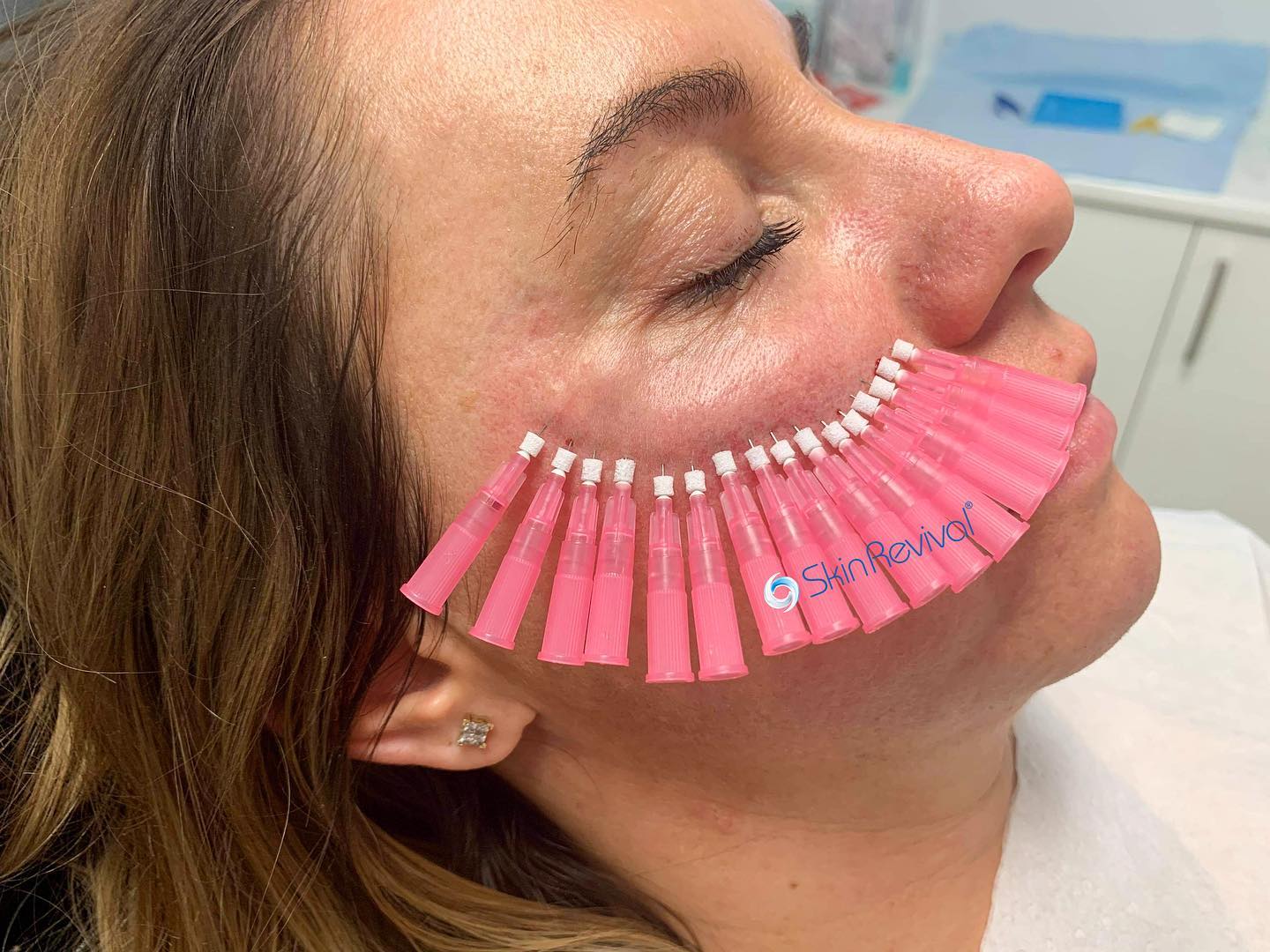In the ever-evolving world of cosmetic aesthetics, one treatment that has garnered significant attention is PDO thread lifting. As a minimally invasive procedure, it offers patients a way to achieve a more youthful appearance without the need for extensive surgery. This pdo thread placement guide aims to provide a comprehensive overview of everything you need to know about this innovative technique, from the basics of PDO threads to post-procedure care and maintenance.
Table of Contents
ToggleIntroduction to PDO Threads

As we delve into the realm of PDO threads, it’s essential to understand what they are and how they work. This section breaks down the concept of PDO threads, their benefits, and the various types available.
What are PDO Threads?
PDO threads, short for Polydioxanone threads, are surgical sutures that have been used for many years in medical procedures. In aesthetic medicine, they have emerged as a popular option for non-surgical facelifts and skin tightening.
When inserted into the skin, these threads stimulate collagen production, leading to tighter, firmer skin over time. The threads dissolve naturally within six months, leaving behind a supportive structure of collagen that promotes rejuvenation.
The effectiveness of PDO threads lies in their ability to lift and tighten sagging skin while simultaneously enhancing overall facial contours. They can be used on different parts of the body, making them versatile tools in aesthetic treatments.
Benefits of PDO Thread Lifting
PDO thread lifting presents numerous advantages over traditional surgical methods. One of the primary benefits is its minimal invasiveness. Unlike facelifts, which require incisions and longer recovery times, PDO threads can be inserted with just a few tiny punctures in the skin.
Patients experience less discomfort and downtime, allowing them to return to their daily activities more swiftly. Additionally, the procedure is relatively quick, often taking under an hour to complete.
Moreover, PDO threads offer natural-looking results. Because they promote collagen production, the lifted areas appear youthful and vibrant without the “pulled” look often associated with surgical procedures.
Overview of PDO Thread Types
Understanding the different types of PDO threads is crucial when considering treatment options. PDO threads can be categorized primarily into three main types: mono threads, cog threads, and screw threads.
Mono threads are smooth and are mainly used for skin rejuvenation by stimulating collagen production. They are excellent for fine lines and adding volume to specific areas.
Cog threads, on the other hand, have barbs that allow them to grip the tissue, providing a lifting effect. These are ideal for treating sagging skin on the face and neck.
Lastly, screw threads consist of multiple threads twisted together, offering significant volume and support. They can be utilized in areas where more lifting is necessary, such as deeper folds or sagging cheeks.
Understanding the PDO Thread Procedure

Before diving into the procedure itself, it’s vital to grasp the foundational aspects of PDO thread lifting, including patient assessment and setting realistic expectations.
Pre-treatment Consultation
A successful PDO thread procedure begins with a thorough pre-treatment consultation. During this initial meeting, practitioners assess the patient’s aesthetic goals, medical history, and suitability for the procedure.
It is essential for patients to communicate any previous surgeries, allergies, or skin conditions that may affect the outcome. Practitioners will also evaluate skin elasticity, texture, and overall health to determine the appropriate approach for each individual.
This stage is not only about gathering information but also educating the patient about what to expect during and after the procedure. Open dialogue fosters trust and lays the groundwork for a positive experience.
Patient Assessment Criteria
Patient assessment is integral to the PDO thread process. Certain criteria must be met to ensure optimal results.
Practitioners typically look for signs of skin laxity, age-related changes, and areas where PDO threads would be most beneficial. An ideal candidate is someone who desires subtle yet noticeable improvements rather than drastic changes.
Additionally, emotional and psychological readiness plays a role in determining candidacy. Patients should have realistic expectations regarding outcomes and understand that while PDO threads can enhance their appearance, they won’t stop the aging process.
Setting Realistic Expectations
Setting realistic expectations is pivotal for patient satisfaction. While PDO thread lifting offers significant enhancements, it does not equate to a surgical facelift.
Patients should be informed that results will vary based on individual factors such as skin type, age, and lifestyle. A full understanding of the temporary nature of PDO threads and the gradual improvement in skin quality can help align patient expectations with actual outcomes.
By fostering a transparent conversation about potential results and recovery, practitioners can help patients feel empowered and satisfied with their decisions.
Anatomy of the Face and Body for PDO Thread Placement

A solid understanding of anatomy is essential for effective PDO thread placement. This section highlights key facial structures, common treatment areas, and considerations for body treatments.
Key Facial Structures
The face comprises several critical structures impacting aesthetics. Knowledge of these anatomical components helps practitioners determine where to place PDO threads for maximum effect.
The dermis and subcutaneous layers play crucial roles in supporting the skin’s elasticity and firmness. Collagen and elastin fibers within these layers provide structural integrity, and their depletion contributes to sagging.
Facial muscles also influence the overall appearance. Understanding how these muscles interact allows practitioners to strategically place threads to enhance natural contours while avoiding complications.
Common Treatment Areas
PDO threads can be applied to various areas on the face and body. On the face, common treatment zones include the jowls, cheeks, eyebrows, and neck. Each area requires distinct techniques to achieve optimal results.
For instance, placing threads in the jowl area can help lift sagging skin, while treating the cheeks can enhance volume and contour. The neck often requires a combination of lifting and rejuvenating techniques to combat signs of aging.
Beyond the face, PDO threads can be used on the body to treat sagging skin on the arms, abdomen, and thighs. Understanding the unique characteristics of each area is essential for tailoring treatment plans to individual needs.
Considerations for Body Treatments
Body treatments involve additional considerations compared to facial procedures. The skin on various body parts may differ in thickness, texture, and elasticity.
When using PDO threads on the body, practitioners must account for the patient’s overall body composition and specific goals. For example, the abdomen may require stronger threads or more strategic placement to achieve effective contouring.
Additionally, discussing patient expectations and possible outcomes becomes even more important for body treatments, as results may differ significantly from those seen on the face.
Choosing the Right PDO Threads
Selecting the appropriate PDO threads is a critical step in achieving desired results. This section delves into the types of PDO threads available and how to choose the right ones.
Different Types of PDO Threads
As previously mentioned, PDO threads come in various forms, each serving unique purposes. Mono threads are excellent for skin rejuvenation, offering a subtle enhancement that improves skin quality over time.
Cog threads, with their barbed design, provide a more pronounced lifting effect, making them suitable for areas with significant sagging. Their unique structure ensures that they securely hold the tissue in place.
Screw threads excel in volumizing effects, creating a plush appearance in targeted areas. Practitioners may opt for a combination of these threads depending on the treatment plan and anticipated outcomes.
Selection Based on Desired Results
Choosing the right threads is directly related to the results a patient wishes to achieve. For those seeking a natural lift, a combination of mono and cog threads might be effective.
Conversely, patients desiring more substantial volume might benefit from screw threads alone or in conjunction with cog threads. Discussing these preferences during the consultation phase can guide practitioners in selecting the most appropriate materials.
Every patient’s case is unique, and customizing the treatment plan to suit individual goals is paramount for achieving satisfactory results.
Suture Material and Configuration
The suture material and configuration also play a role in the efficacy of PDO threads. Most PDO threads are made from polydioxanone, a biodegradable material known for its safety and biocompatibility.
However, certain configurations, such as the number of barbs or the density of mono threads, can alter how effectively they engage the tissue. Practitioners must consider the specific requirements of each treatment area and the individual’s skin condition when selecting suture materials.
Preparing for PDO Thread Insertion

Preparing for the PDO thread insertion involves various steps to ensure both safety and effectiveness. This section covers equipment, sterilization, and anesthesia options.
Equipment and Supplies Needed
Proper preparation is fundamental for any medical procedure. For PDO thread placement, practitioners require specialized equipment, including needles designed for inserting threads, PDO suture packs, and sterile gloves.
Having all necessary supplies on hand streamlines the process and minimizes the risk of complications. It’s crucial to ensure that all equipment is in good working order and that practitioners are trained in using these tools.
Sterilization and Safety Protocols
Sterilization is imperative to prevent infection and other complications. Practitioners must follow strict safety protocols, including disinfecting the treatment area and using sterile instruments.
Before beginning the procedure, practitioners should apply antiseptic solutions to the patient’s skin to further reduce the risk of contamination. Adhering to these protocols instills confidence in patients that they are receiving safe and effective care.
Anesthesia Options
Pain management is a vital aspect of ensuring a comfortable experience for patients. While PDO thread insertion is generally well-tolerated, practitioners may offer various anesthesia options to enhance comfort.
Topical anesthetics can numb the surface of the skin, minimizing discomfort during the insertion process. In some cases, local anesthesia may be administered to ensure that patients remain entirely pain-free throughout the procedure.
Discussing these options beforehand allows patients to make informed decisions about their comfort levels during treatment.
The Step-by-Step Guide to PDO Thread Placement

With preparations complete, practitioners can proceed with the PDO thread placement. This section outlines the crucial steps involved in ensuring a successful procedure.
Marking the Injection Sites
Before any threads are inserted, marking the injection sites is essential. Practitioners typically use a washable marker to outline the areas where threads will be placed based on the patient’s anatomical features and desired outcomes.
This step provides a visual guide during the procedure and helps ensure accurate placement. Practitioners should explain the process to patients, highlighting the importance of these marks for achieving optimal results.
Techniques for Insertion
Inserting PDO threads requires precision and skill. Practitioners may adopt different techniques based on the type of threads used and the treatment area.
One common method is the linear threading technique, where threads are placed in a straight line within the designated areas. Alternatively, the fan technique distributes threads across broader regions, creating a more even lift.
Mastering these techniques is crucial for delivering natural-looking results while minimizing discomfort for patients.
Depth and Angle of Insertion
The depth and angle at which PDO threads are inserted significantly impact the outcome. Depending on the treatment area, threads may need to be placed at varying depths to achieve desired lifting effects.
Practitioners must have a keen understanding of facial and body anatomy to determine the best angles for insertion. Factors such as skin thickness and underlying structures play a role in ensuring that threads are correctly positioned for optimal results.
Post-Procedure Care

Once the PDO threads have been successfully placed, proper post-procedure care is essential to maximizing results and safeguarding against complications.
Immediate Aftercare Instructions
Immediately after the procedure, practitioners provide patients with specific aftercare instructions to follow. These guidelines usually emphasize avoiding strenuous activities, sun exposure, and excessive facial expressions for the first few days.
Patients may be advised to apply cold compresses to mitigate swelling and bruising. Clear instructions help ensure that patients understand the importance of following these recommendations for the best possible outcome.
Long-term Care for Optimal Results
Long-term care extends beyond immediate aftercare. Patients should be educated about maintaining healthy skin through proper skincare routines and lifestyle choices.
Hydration, sun protection, and avoiding smoking are crucial for sustaining skin health. Practitioners may recommend regular follow-up visits to monitor progress and address any concerns that arise.
Emphasizing long-term care empowers patients to take ownership of their results and prolong the effects of the PDO thread treatment.
Signs of Complications
While complications from PDO thread lifting are rare, it’s essential for patients to recognize signs of potential issues. Symptoms such as severe pain, persistent swelling, or unusual discoloration should prompt immediate communication with their practitioner.
Educating patients on what to watch for enables timely intervention if complications arise, ensuring a safer and more satisfying experience overall.
Managing Complications and Side Effects

Despite the procedure’s relative safety, managing complications and side effects is a crucial component of the PDO thread process. This section explores common side effects, adverse reactions, and when to seek medical attention.
Common Side Effects
Common side effects following PDO thread placement are typically mild and temporary. Bruising and swelling around the insertion sites are prevalent and usually resolve within a few days.
Patients may also experience slight discomfort or tenderness, comparable to what one might feel after a minor injection.
In most cases, these side effects are manageable and do not require intervention. However, patients should be reassured that open communication with their practitioners is encouraged if they have any lingering worries.
Addressing Adverse Reactions
While rare, some patients may experience more significant adverse reactions ranging from allergic responses to infection. If patients notice symptoms like severe redness, warmth, or drainage from the insertion sites, they should contact their practitioner promptly.
Prompt diagnosis and intervention are key to addressing these issues effectively. Practitioners may prescribe medications or recommend specific treatments to alleviate these conditions.
When to Seek Medical Attention
Understanding when to seek medical attention is crucial for patient safety. If individuals experience symptoms such as high fever, difficulty breathing, or extreme swelling, they should seek emergency care immediately.
Educating patients about recognizing these signs helps ensure that they feel supported throughout their treatment journey, reducing anxiety surrounding potential complications.
PDO Thread Maintenance and Longevity

Once PDO threads have been placed, understanding maintenance and longevity is essential for maximizing results. This section discusses factors influencing durability, follow-up treatments, and how to incorporate other aesthetic procedures.
Factors Influencing Durability
The longevity of PDO threads depends on various factors, including the type of threads used, individual metabolism, and skin condition. Typically, PDO threads dissolve within six months, but the collagen produced continues to enhance skin elasticity and firmness.
Practitioners must assess individual patient factors, such as age and health, to provide accurate expectations regarding how long results may last. Regular monitoring and follow-up can help gauge the effectiveness of the treatment over time.
Follow-up Treatments
To maintain the results achieved through PDO thread lifting, follow-up treatments may be necessary. Practitioners often recommend touch-up sessions to re-establish support and sustain collagen production.
These follow-up appointments allow practitioners to evaluate the overall condition of the skin and adjust treatment plans as needed. Encouraging patients to stay proactive about their aesthetic goals fosters a positive client-practitioner relationship.
Incorporating Other Aesthetic Procedures
Many patients choose to combine PDO thread lifting with other aesthetic procedures for enhanced results. Options such as dermal fillers, Botox, and laser treatments can complement the lifting effects of PDO threads.
Educating patients about the synergistic effects of these treatments encourages informed decision-making. By tailoring treatment plans to fit individual needs, practitioners can create holistic approaches to aesthetic care.
Comparing PDO Threads with Other Treatments
As patients explore cosmetic options, comparing PDO threads with other treatments is essential. This section evaluates PDO threads in relation to dermal fillers, surgical facelifts, and non-surgical alternatives.
PDO Threads vs. Dermal Fillers
While both PDO threads and dermal fillers aim to enhance facial aesthetics, they serve distinct purposes. Dermal fillers focus on adding volume and smoothing wrinkles by filling specific areas beneath the skin.
Conversely, PDO threads primarily provide lifting and tightening effects by physically repositioning the skin. Many patients find that combining both treatments yields optimal results, addressing multiple concerns simultaneously.
PDO Threads vs. Surgical Facelifts
Surgical facelifts are often perceived as the gold standard for achieving dramatic results. However, they involve significant downtime, complications, and risks associated with surgery.
PDO threads present a non-invasive alternative, offering similar lifting effects without the need for extensive recovery. For many patients, the trade-off of less dramatic results for enhanced safety and convenience makes PDO threads an appealing choice.
PDO Threads vs. Non-surgical Alternatives
In addition to PDO threads and dermal fillers, there are various non-surgical alternatives available in the market, including ultrasound therapy and radiofrequency treatments.
Each option presents unique benefits and limitations. While PDO threads provide immediate lifting and long-lasting collagen stimulation, other treatments may offer gradual improvements over time.
Understanding the differences among these modalities enables patients to make informed choices based on their specific goals and preferences.
Conclusion
The pdo thread placement guide provides invaluable insights into the innovative world of PDO thread lifting. From understanding the fundamentals of PDO threads and their benefits to comprehensively navigating the procedure and post-care, this guide serves as a practical resource for anyone considering this transformative treatment.
As aesthetic preferences continue to evolve, PDO threads stand out as a powerful tool for achieving natural-looking results with minimal downtime. By understanding the intricacies of this procedure and collaborating closely with qualified practitioners, patients can confidently embark on their journey toward enhanced beauty and self-confidence.
Contact us via other platforms if you have any questions or requests that need to be answered quickly.
Tiktok: www.tiktok.com/@lunabeautyacademy6
Hotline: 034 254 0228
Email: lunabeautyacademy@gmail.com
Address: No. 29, Alley 140/1/2, Lane 140 Nguyen Xien, Thanh Xuan, Hanoi
Luna wishes you success and hopes you will have the best experiences at the academy. If you need advice or answers about anything, please leave your Contact Information With Us, the Luna team will contact you soon. Thank you for reading this article.


















